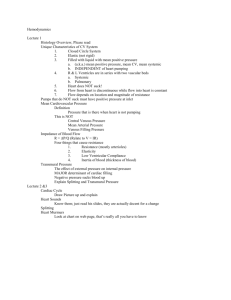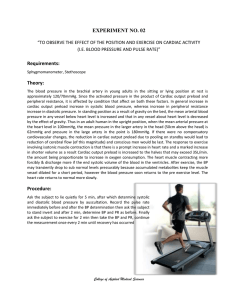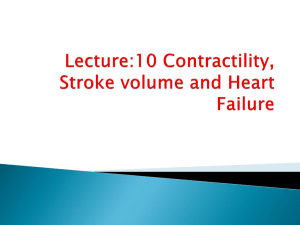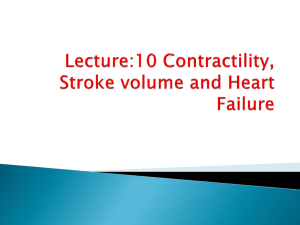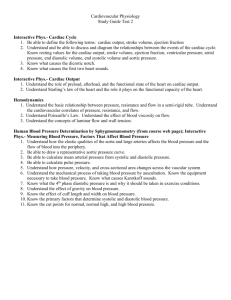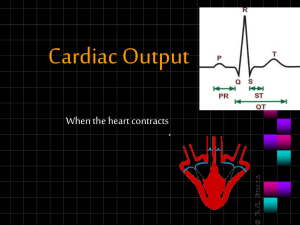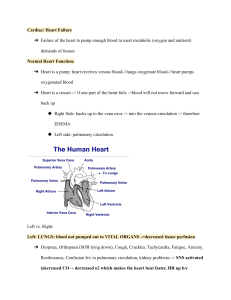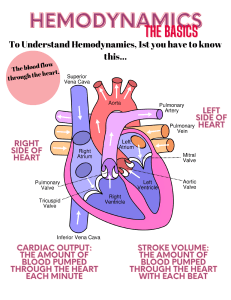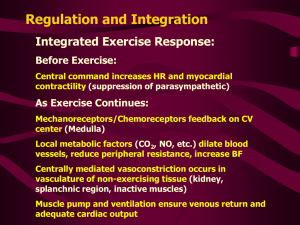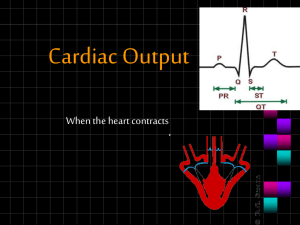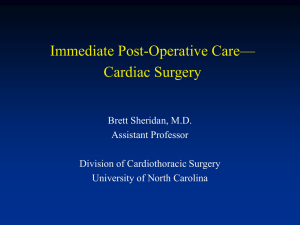Cardiac Pathophysiology B
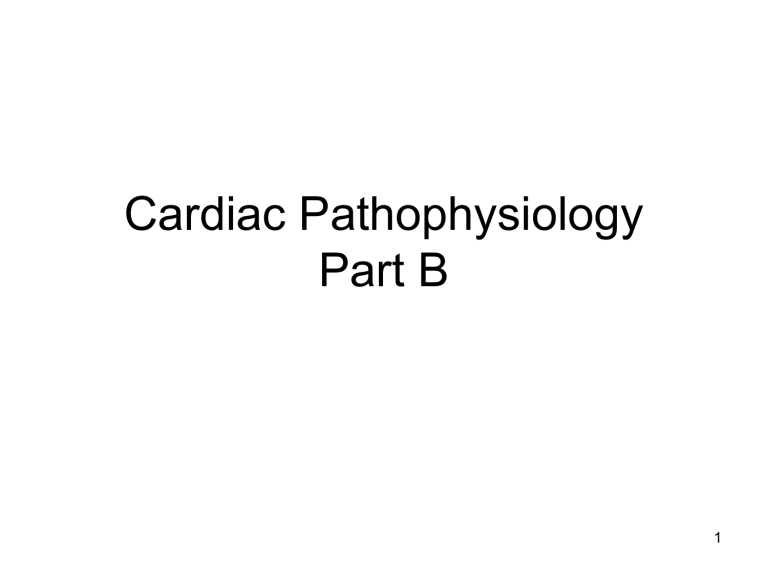
Cardiac Pathophysiology
Part B
1
Heart Failure
• The heart as a pump is insufficient to meet the metabolic requirements of tissues.
• Can be due to:
– dysfunction of the left ventricle
– dysfunction of the right ventricle
– or due to inadequate perfusion despite normal or elevated cardiac output
2
Classification of Heart Failure
• Acute –develops quickly
• Chronic – conditions gradually increase demands on the heart; when the heart and circulatory system can no longer adapt the result is heart failure
– Can lead to acute failure with excessive cardiac demand
3
Four broad consequences of heart failure
• Congestion – blood backs up
• Activation of circulatory compensations
• Cardiac output declines
• Death
4
Types of Heart Failure
• High output vs. Low output
• High output
– Anemia
– Septicemia
– Hyperthroidism (thyrotoxicosis)
– Beriberi
• Low output
– Decreased pumping ability and cardiac output
5
• Right-sided vs. Left sided Heart Failure
• Right-sided HF
– Most common cause is left heart failure
– Can occur independently in primary lung disease conditions
• COPD, ARDS, cystic fibrosis
• Cor pulmonale
• Left-sided HF
– Decreased output to body
– Blood backs up
6
Systolic vs. Diastolic HF
• Systolic – decreased contraction leads to decreased output and poor perfusion of tissues
7
Contractility is reduced by diseases that disrupt myocyte activity
– Most common cause is myocardial infarction
– Myocarditis
– Myocardopathies
• When contractility decreases, stroke volume decreases, and left ventricular end-diastolic volume (LVEDV) increases.
• This causes dilation of the heart and increased preload
8
Preload can also increase with excess plasma volume
– I.V. Fluid administration
– Renal failure
– Mitral valve disease
• Increased LVEDV at first increases C.O., but over time can cause dysfunction of sarcomeres (stretched too far) and decreased contractility
9
Increased afterload is usually due to increased peripheral resistance
– Hypertension
• Left ventricle works harder to overcome resistance, and hypertrophies.
• Hypertrophy causes changes in the myocytes.
• Also see deposition of collagen between myocyctes which can disrupt contractility and make ventricle more likely to dilate and fail.
10
Leads to increased blood pressure and pulmonary congestion →
– Dyspnea
– Orthopnea – difficulty breathing in any position other than upright
– Coughing up frothy sputum
– Chest pain –due to hypoxia at heart
– Fatigue/confusion
– Skin is pale, cold, sweaty
– Pulse and lung sounds abnormal
– Decreased urine output
– Edema
11
Treatment is aimed at breaking the cycle of decreasing contractility and increasing preload and afterload.
• Oxygen, nitrates and morphine – improve myocardial oxygenation, help relieve coronary spasm while lowering preload through systemic vasodilation.
• I.V. inotropic drugs such as dopamine or dobutamine – increase contractility of the heart and can raise B.P. in hypotensive individuals.
12
• Diuretics – reduce preload
• ACE inhibitors – reduce preload and afterload by decreasing aldosterone levels and reducing peripheral venous resistance
• Beta-blockers have been helpful in some people
• Coronary by-pass
• Salt restriction
• Heart transplant
13
Diastolic Heart Failure
• See symptoms and signs of heart failure, a preserved ejection fraction, and abnormal diastolic function
• Accounts for 25 -40% of all cases of heart failure
14
Diastolic H.F. Results from:
• Decreased compliance of left ventricle and abnormal diastolic relaxation- results in increased pressure in ventricle at the end of diastole
• Pressure is reflected back into the atrium and pulmonary circulation
15
Major causes:
• Hypertension – induced myocardial hypertrophy and myocardial ischemia with ventricular remodeling
• Aortic valvular disease
• Mitral valvular disease
• Cardiomyopathies
16
Signs and symptoms are similar to systolic heart failure
• Diagnosis made by echocardiography and heart cateterization
17
Management
• Improve ventricular relaxation and prolong diastolic filling times to reduce diastolic pressure
• Calcium channel blockers, beta-blockers, and ACE inhibitors have been used with success
18
